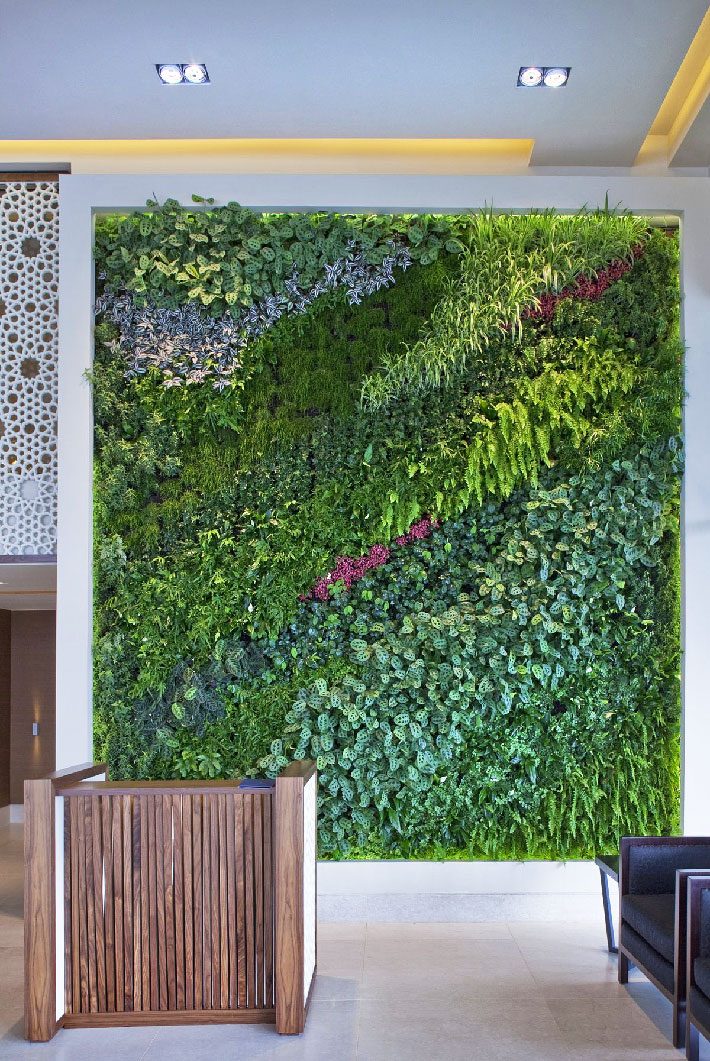
Living Wall Vertical Garden Benefits
Living green walls are a surefire way to enhance a building’s visuals, improve air quality as well as employee alertness and energy levels. Over the past half century, a notable increase of urban-living seekers has led to a considerable uptick in air pollution and loss of green spaces. Living green walls (also commonly referred to as vertical gardens or living walls) are a wonderful solution for any property interested in improving their space with intrinsic benefits of nature.
Living green walls infuse the dull expanse of interiors with life-renewing greenery. They offer an inspirational and aesthetically intriguing natural boost to employee morale. Whether they are installed on the exterior or interior of a building, the structures of living, breathing plant life create the “wow factor” so many interior designers seek while championing sustainability.
You may have arrived here because of your interest in reducing stress, enhancing indoor air quality, improving mental health, reducing employee sick days or demonstrating your commitment to sustainability. You may be seeking living art for the walls. You may be an architect, landscape designer or contractor pursuing the fast-growing market demand for “vertical gardens,” “green walls,“ “plants on wall” or simply “living walls.”
Visual Benefits of Living Green Walls
Living green walls make a breathtaking statement by creating alluring and inviting environments. They are as equally impressive in appearance as they are purveyors of good health; the plants in the walls work as a natural air-filtration system that building occupants can enjoy. Employees are greeted by a green lush environment while savoring the soothing effects of being around an abundance of foliage.
An emerging trend in green design, these vertically sprawling gardens of green are springing to life across the world on the exteriors of skyscrapers, in hotel lobbies, office reception areas and more.
Improved Air Quality
Living green walls are natural air-filters, creating a cleaner, more invigorating work environment that will lead to better overall employee health and production. Officer workers are often exposed to air toxins in their work environment such as formaldehyde, carbon monoxide, VOCs and benzene. Living green walls metabolize harmful toxins while releasing oxygen into the workplace air, much like office plants but on a much larger scale.
Energy Cost Reduction
The interior and exterior living green walls function to cool the air in the warmer summer months by a process known as “evapotranspiration.” The winter months see the added advantage of building insulation thus reducing energy costs for heating the building.
Exterior living green walls can reduce wall surface temperatures by as much as 50 degrees °F, resulting in significant energy savings and air conditioning costs.
Noise Level Reduction
One of the lesser known benefits of living green walls, the structures can reduce noise levels in buildings. Plants have been used, throughout the world, to reduce noise along roads and highways. Living green walls expand on this concept as vegetation ‘naturally’ blocks high frequency sounds while the supporting structure can help to diminish low frequency noise.
Living green walls act as extra insulation with a layer of air between the plants and the wall. They also reduce noise levels by reflecting, refracting as well as absorbing acoustic energy.

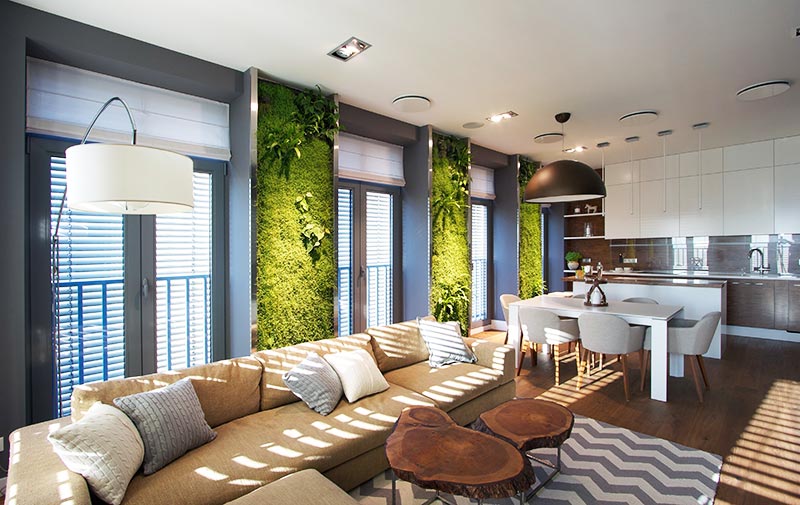
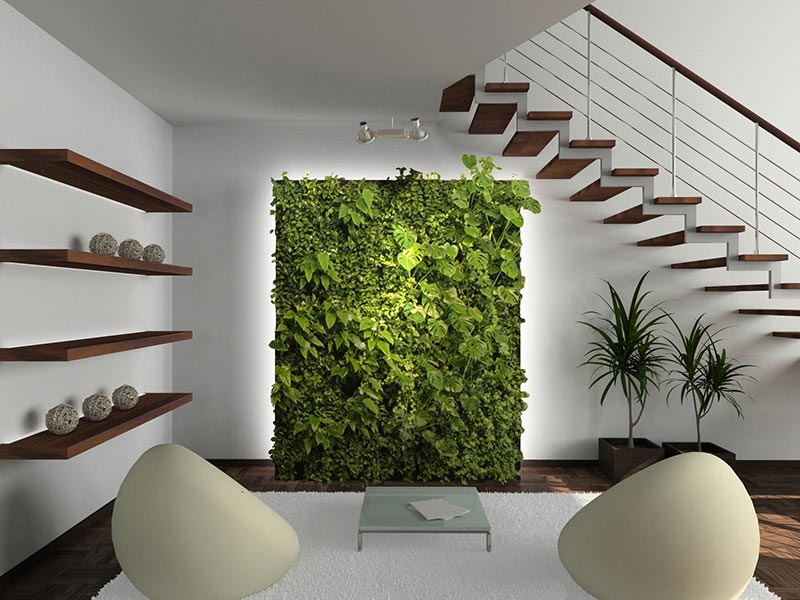
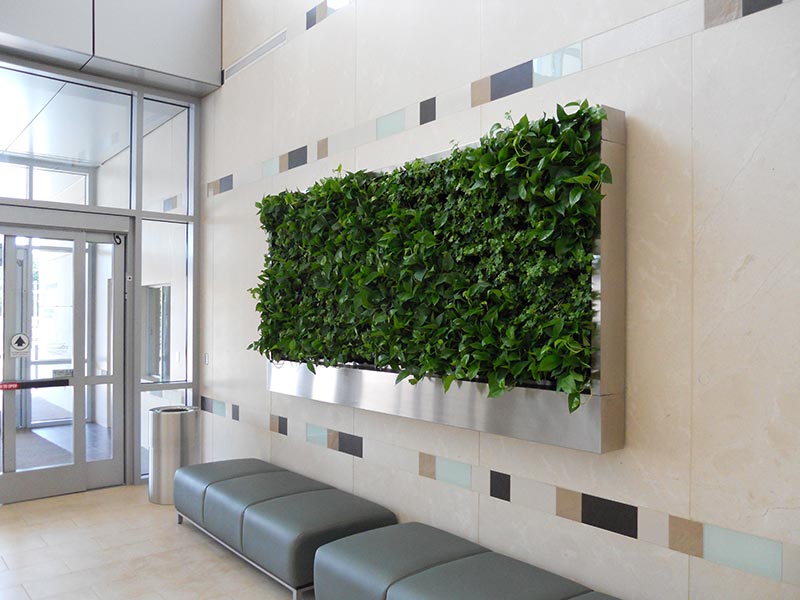
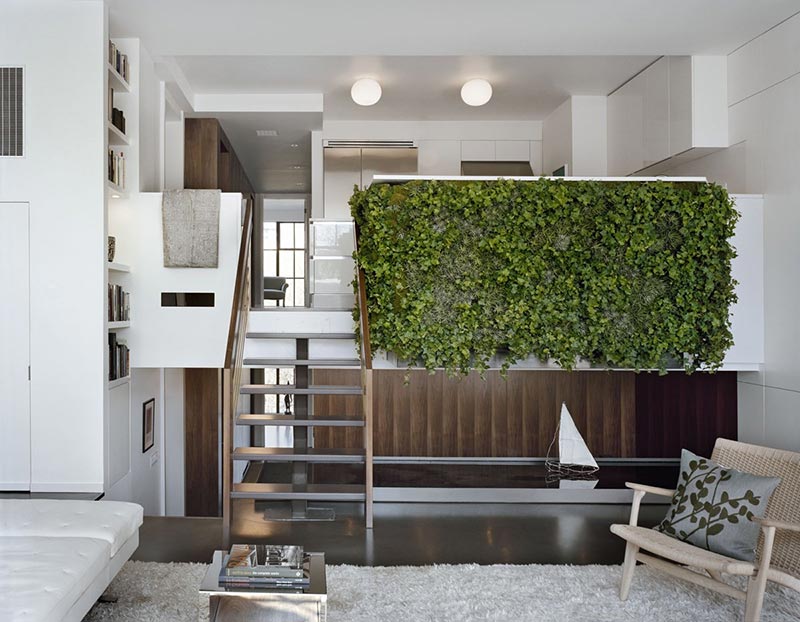
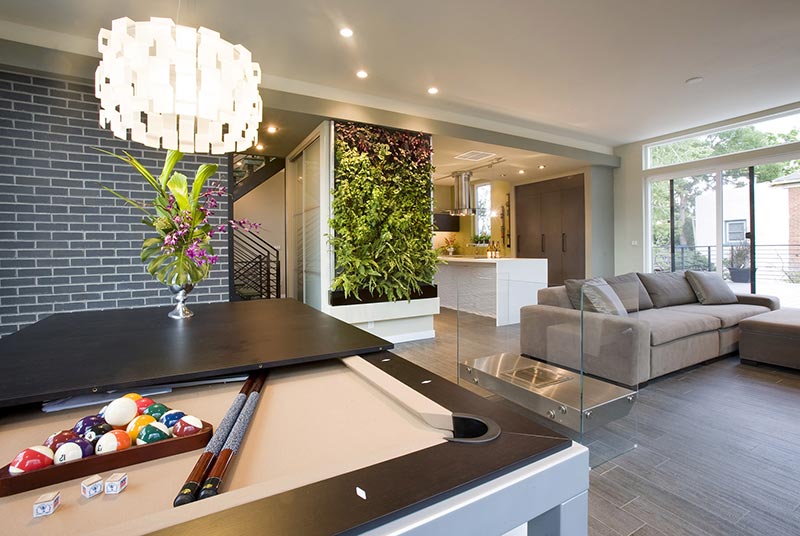
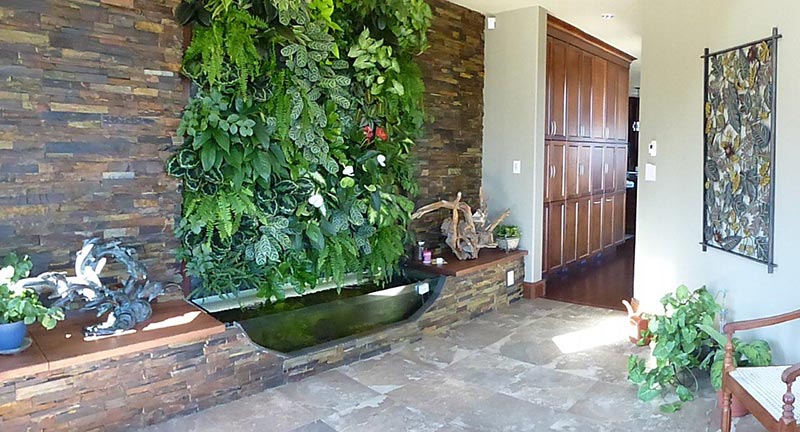
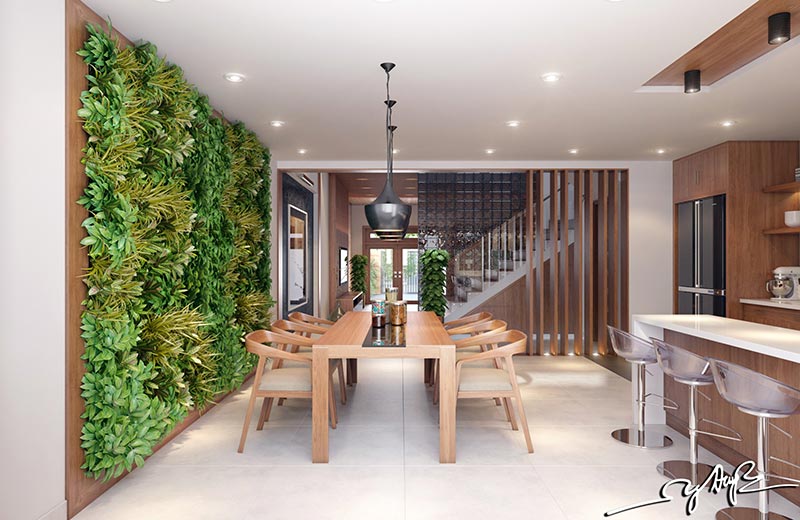
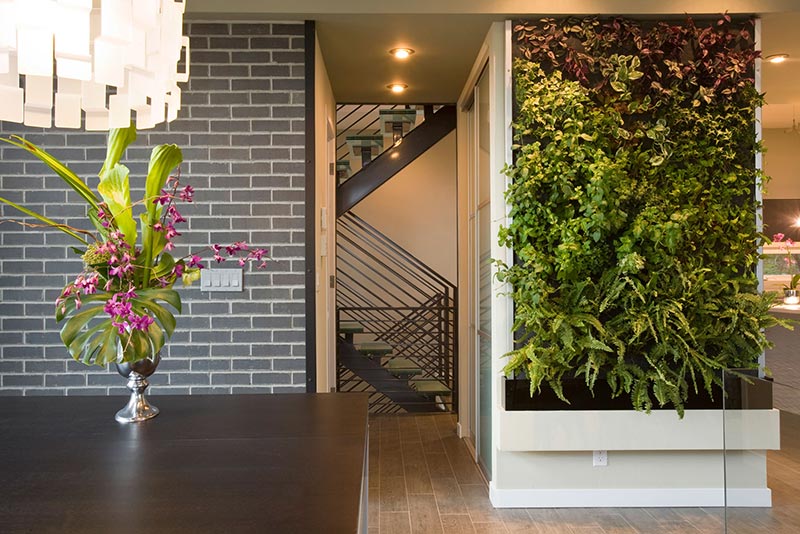

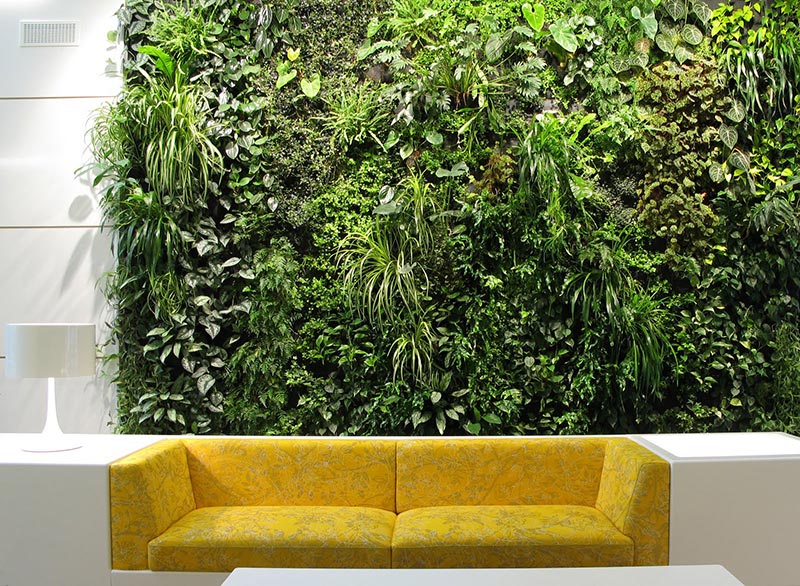



Leave a Reply